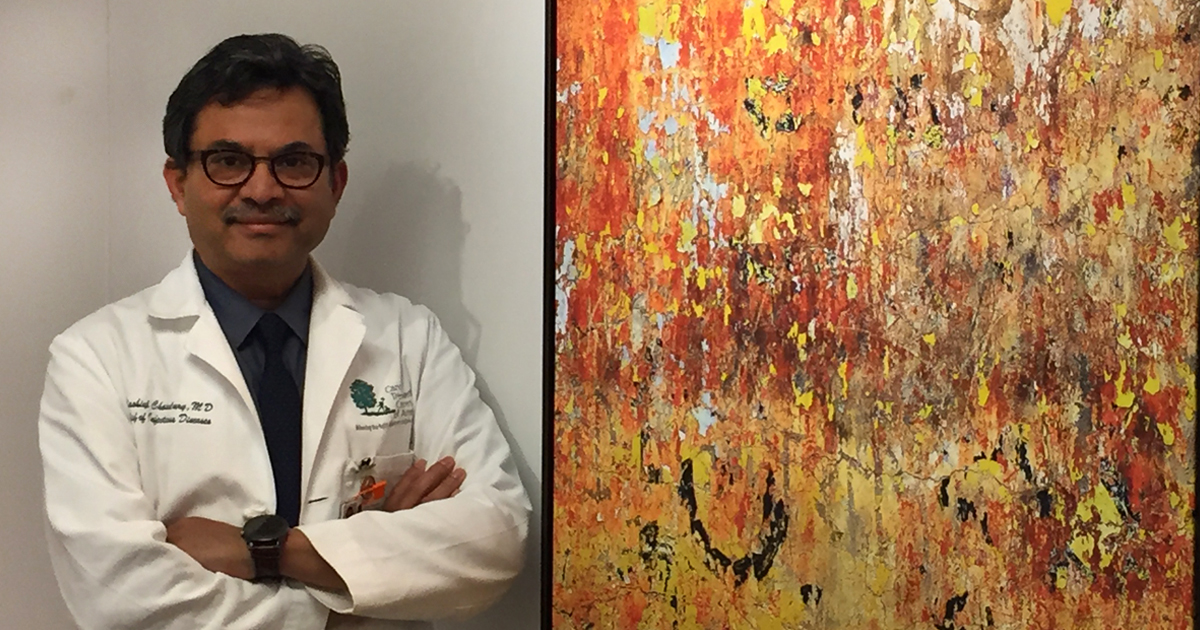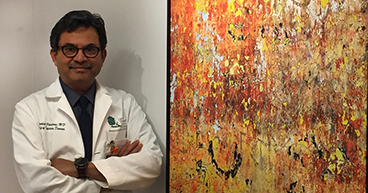
On the corner of art and science, an intersection where disparate crafts commonly collide, you'll often find Mashiul Chowdhury, MD. The Director of Infectious Disease Control at Cancer Treatment Centers of America® (CTCA) is both artist and scientist, photographer and physician. As a doctor based at our hospital in Philadelphia, Dr. Chowdhury oversees treatments for patients with difficult infections. He promotes the responsible use of antibiotics and helps maintain the high standards required to reduce the risk of infection in patients whose immune systems are compromised. In this world, Dr. Chowdhury calls on his medical training in his decision making. In his studio at home or in the field with his camera, Dr. Chowdhury looks at the world through a different lens. "Do I connect my techniques to my paintings when I treat my patients? Not really," he says. "It's two different sides of the brain. I use logic, I use science when I treat patients. But when I paint or take photographs, it’s a complete opposite. There's no logic. It's just from the heart."
Finding art in the ordinary
A native of Dhaka, Bangladesh, Dr. Chowdhury took up painting and photography nearly simultaneously more than 20 years ago. His art, he says, is an "expression of living in urban culture." He looks for the abstract in the ordinary. He studies the ravages of time on the urban landscape. He looks for stains that form interesting shapes or texture and colors that pop from a city bus or a nondescript wall. Nothing is posed or propped. "I don't do conventional photography," he says. "I take photographs of something that may not be commonly noticed or recognized. You may see some graffiti or some paint or a poster peeling off the wall, and over time, it develops textures. If you go very close, very tight, you might see an abstract language that can be very appealing. The technical aspect and execution of my paintings come from my experience with photography. The visual experience of roaming around the city, carefully observing the surface of walls, pavements and the architectural layout of buildings, constantly stimulates my inner feelings. The chaotic character of urban culture is expressed in my work with paintings."
The subjects of his images, he says, represent the passage of time. Each dent on a city bus or faded letter on a sign is part of human history. And each has a story—often untold. "That texture, that image was created over time. Maybe months, maybe years, and with some of my images, maybe 100 years," he says. "They are the stories of human beings. I generally don’t photograph any natural object. There has to be some touch of human activity." Dr. Chowdhury’s work has been displayed at our Pennsylvania hospital and in several galleries in Philadelphia. It can also be viewed on his personal website and in several YouTube videos.
Finding common ground
While painting and photography often are an escape from his professional life, Dr. Chowdhury has found common ground. In his world, art and science are both humanities—grounded in improving the human condition. "When I approach a patient, it's logic and math and science," he says. "But there's also humanity. When I go back to my studio every single day and I work on my paintings, it actually takes me closer to humanity. And then when I come back to a patient in the morning, I see the world in a different way. It is a humbling experience. We have to learn to appreciate life more, learn to take time to enjoy the moment. Stop and smell the roses."
Learn how one CTCA surgeon draws on music to find the rhythm of medicine.



